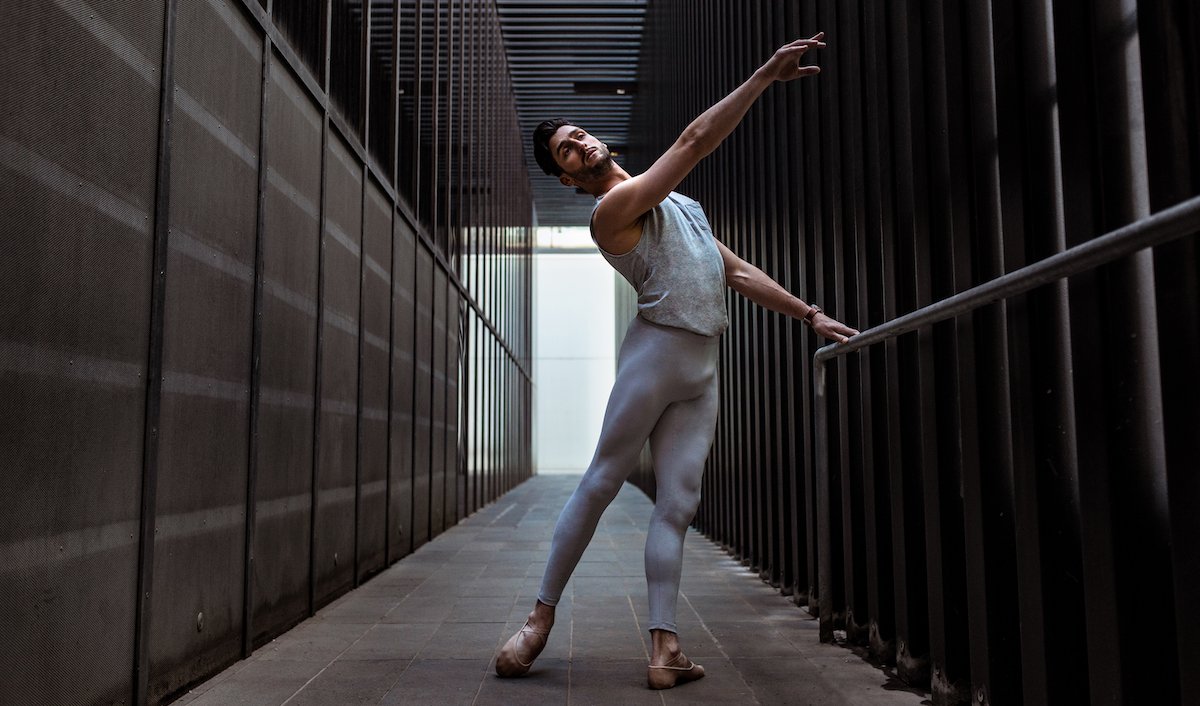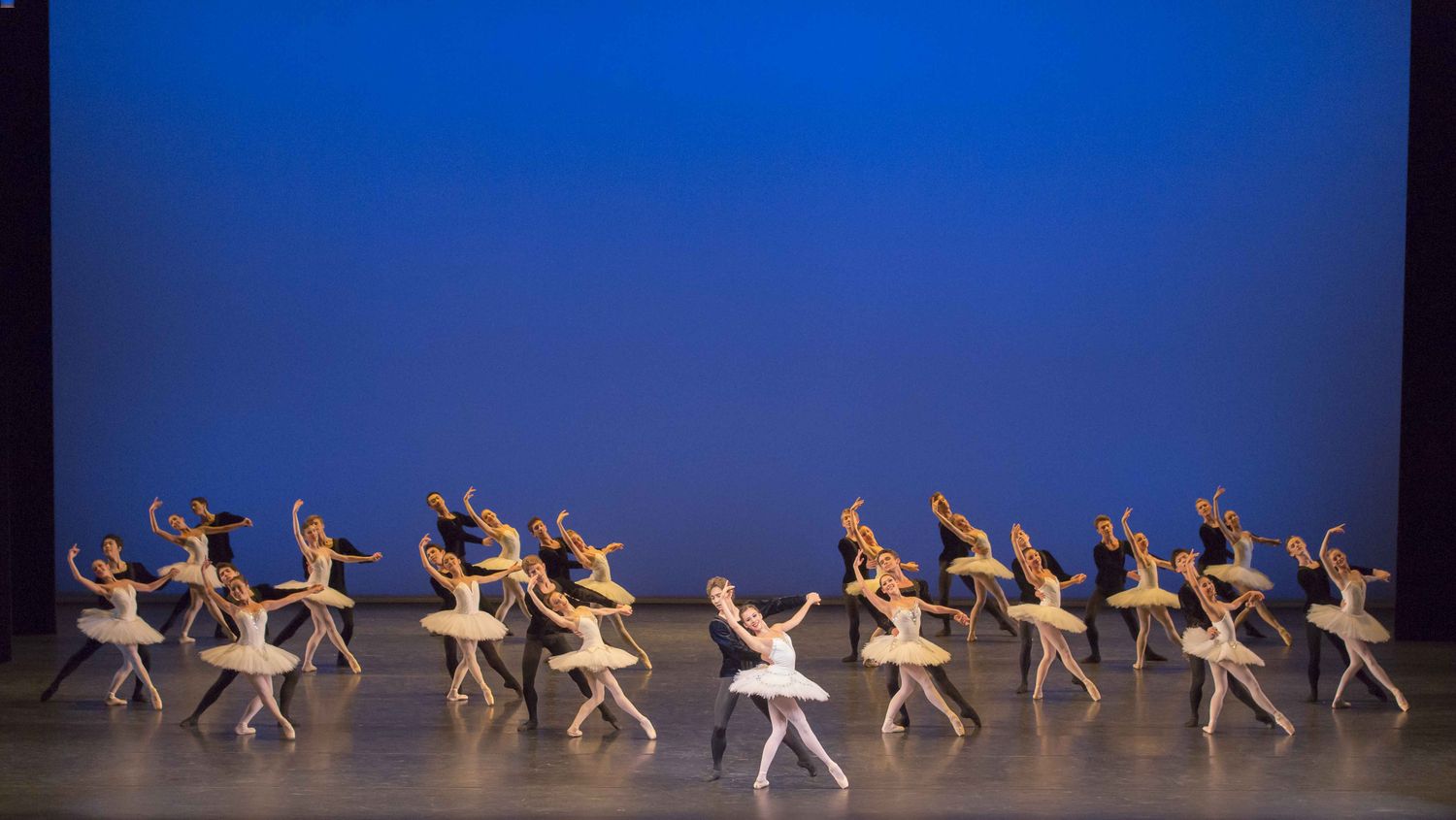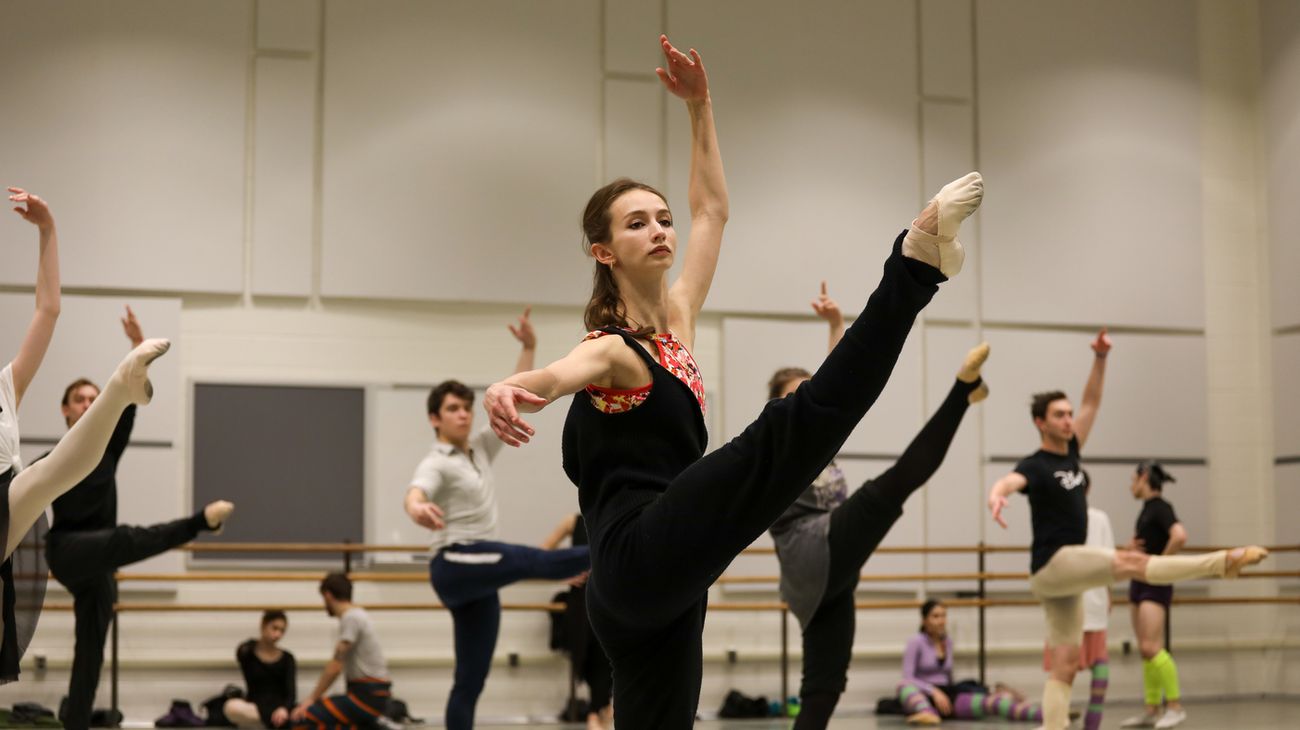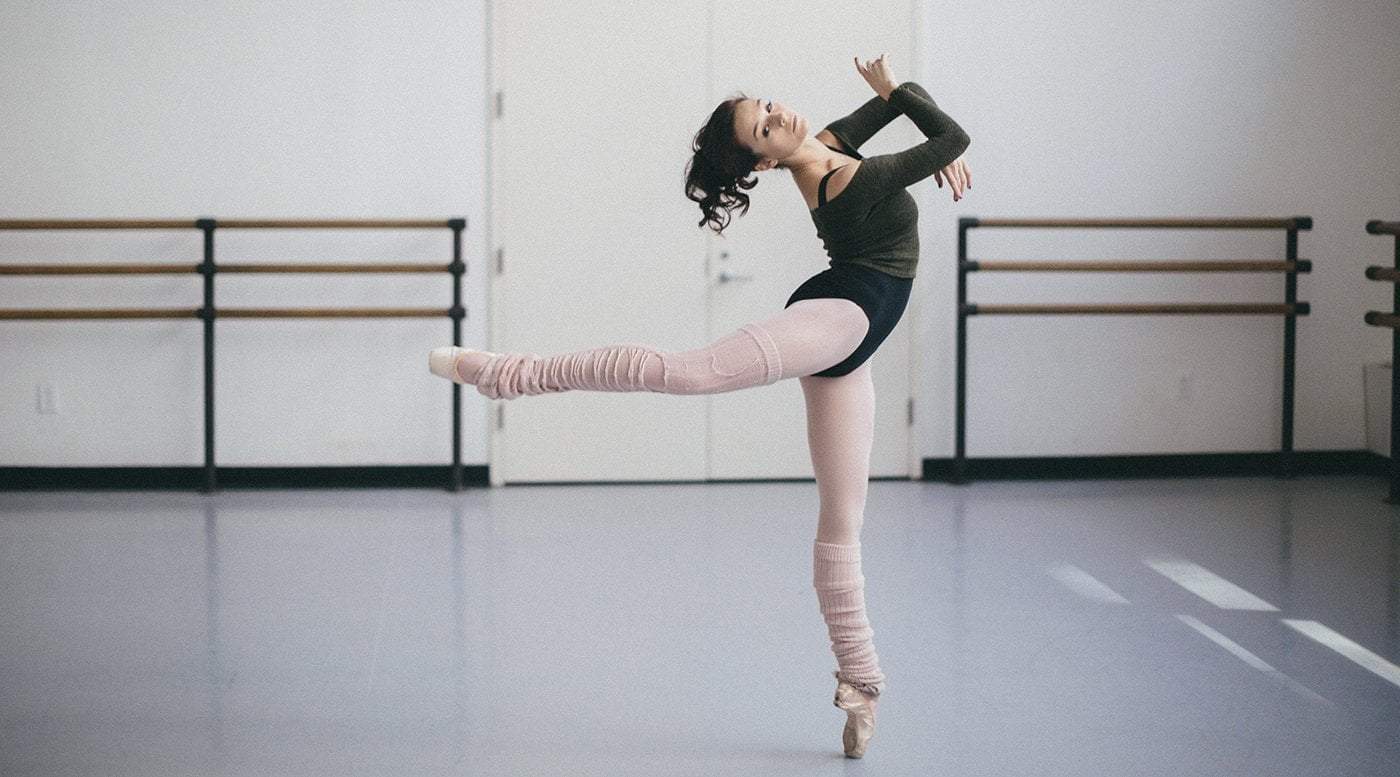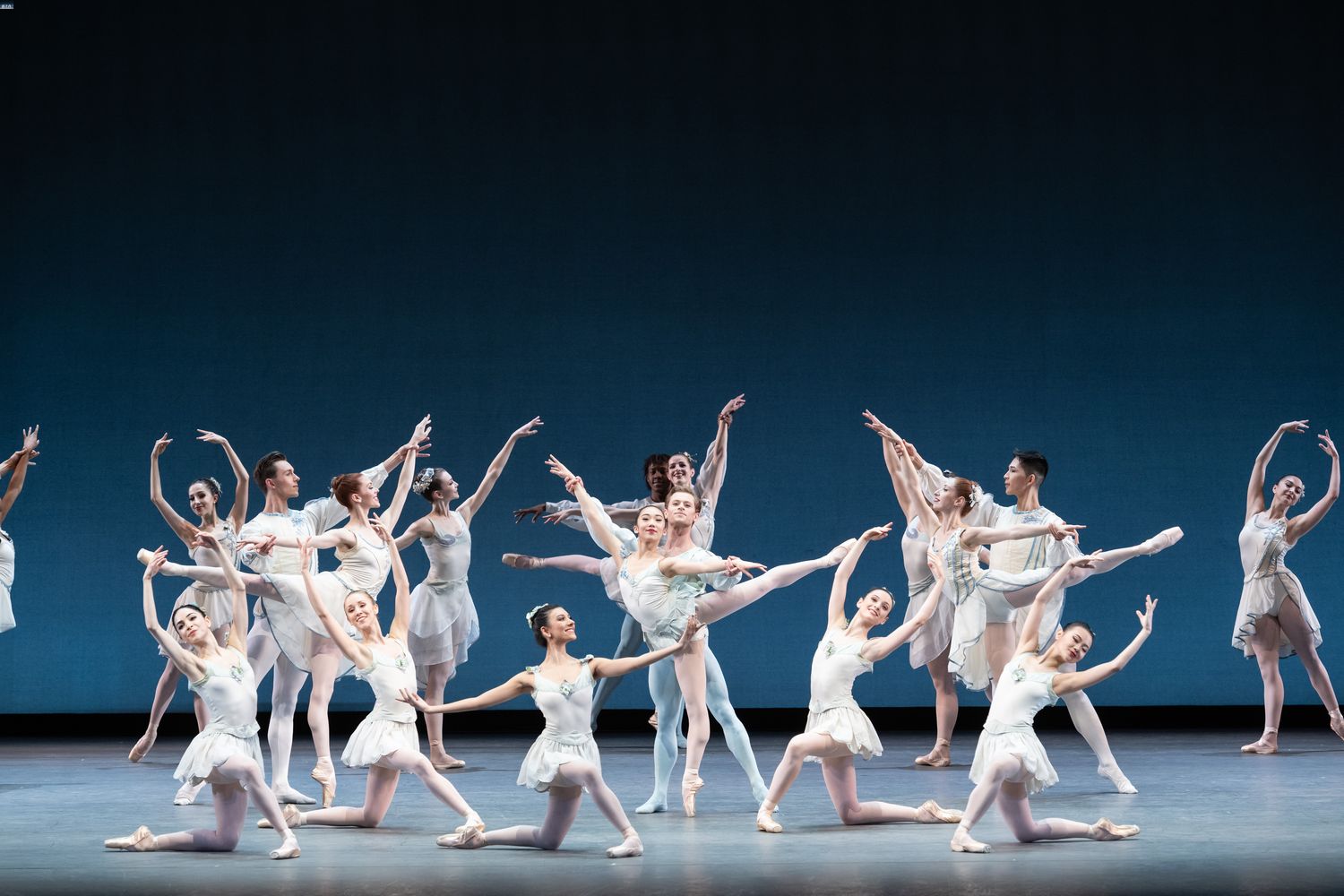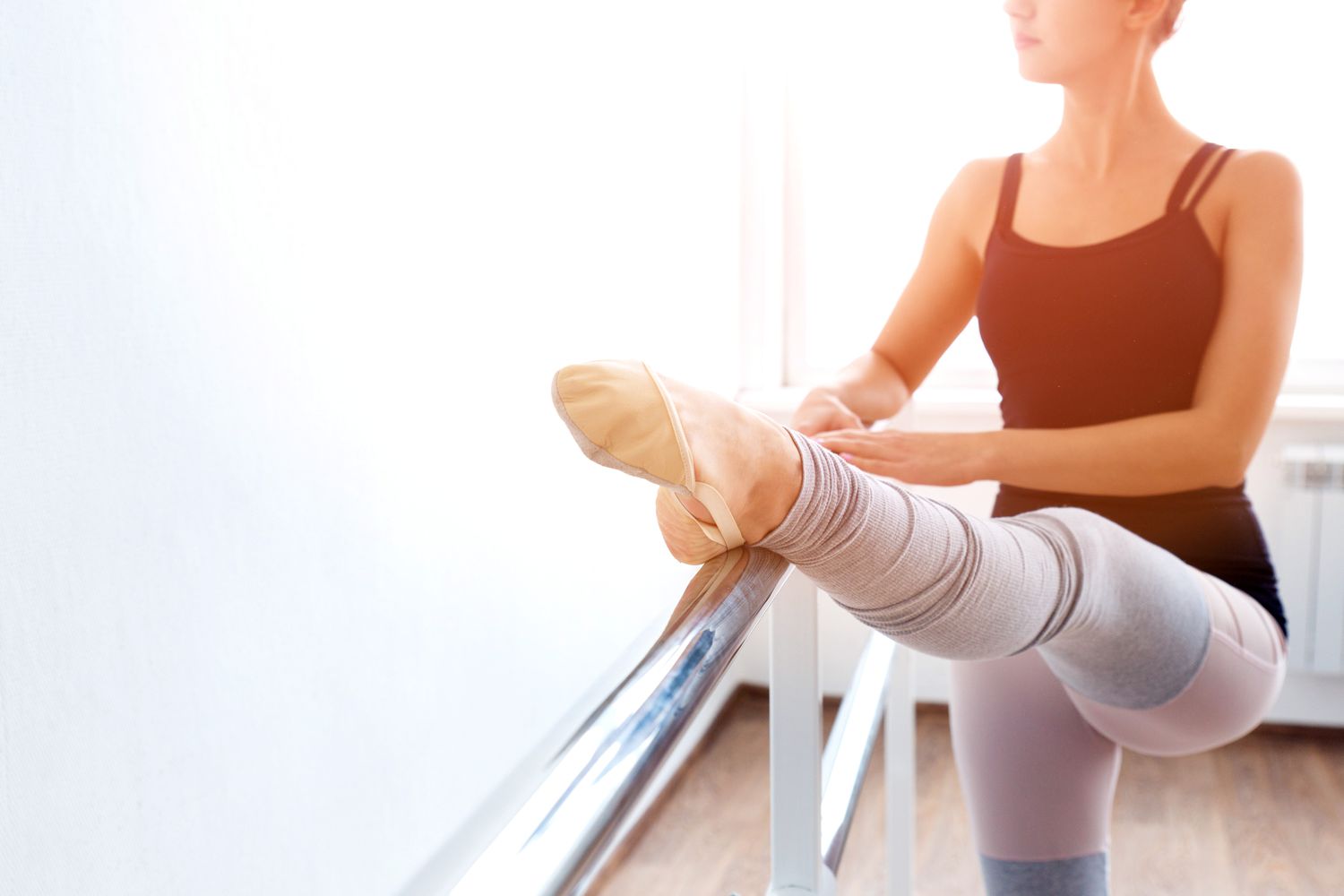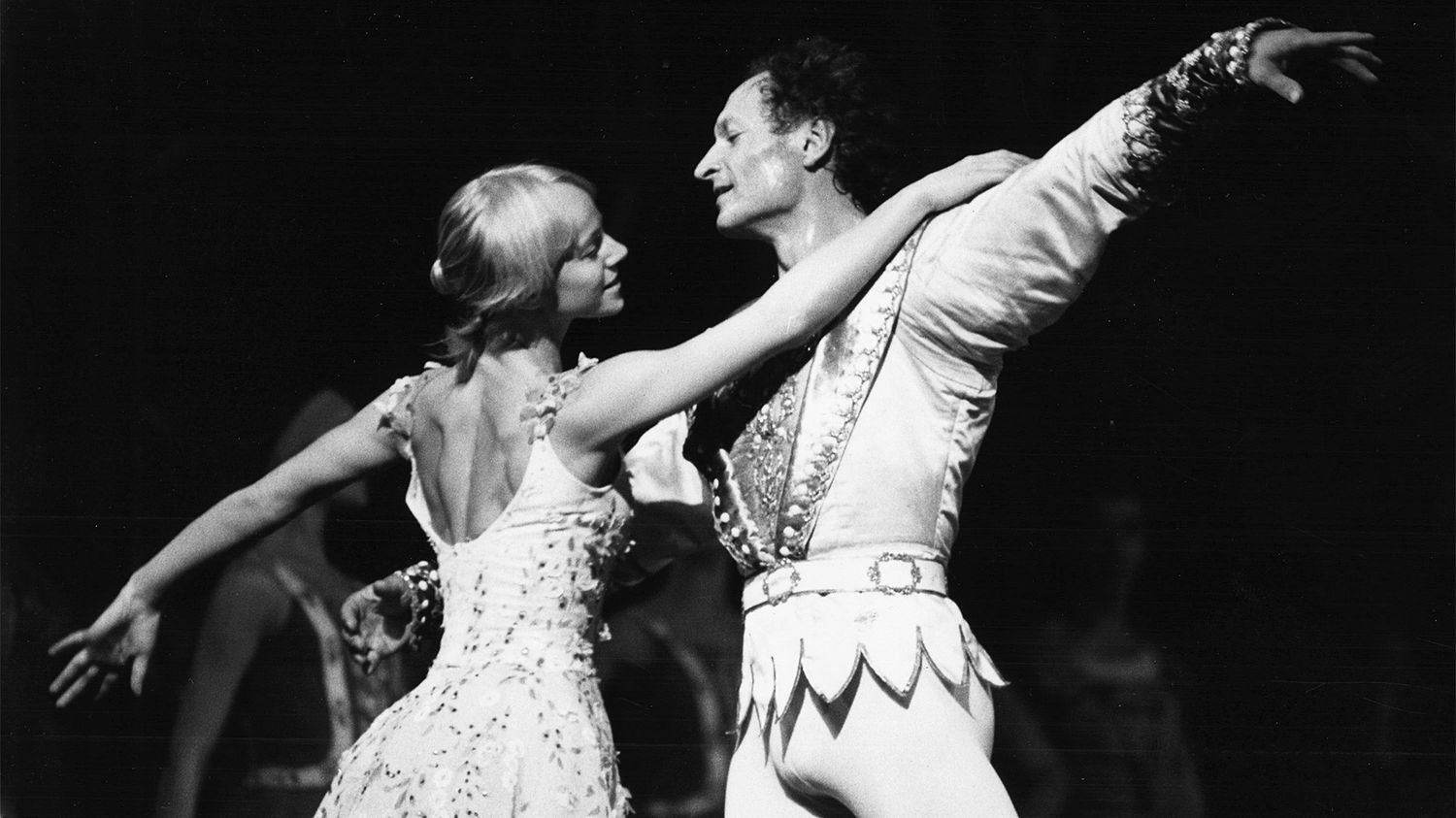Home>Events & Info>Ballet>What Do Ballet Dancers Wear
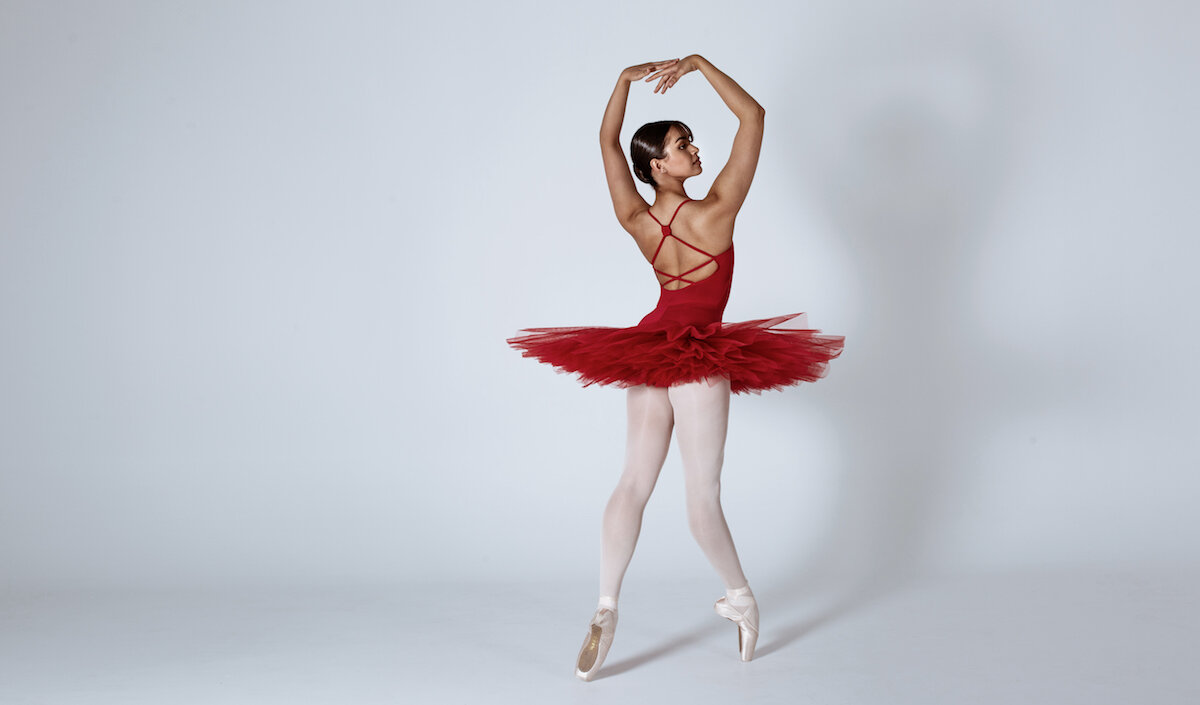

Ballet
What Do Ballet Dancers Wear
Modified: January 22, 2024
Discover what ballet dancers wear for their performances and training. From leotards and tutus to ballet slippers and pointe shoes, find out the essentials for every ballet enthusiast.
(Many of the links in this article redirect to a specific reviewed product. Your purchase of these products through affiliate links helps to generate commission for AudioLover.com, at no extra cost. Learn more)
Table of Contents
Introduction
Ballet is a centuries-old art form that captivates audiences around the world. Behind the graceful movements, breathtaking lifts, and seemingly effortless leaps, there is a world of dedicated dancers and a rich history of traditional attire. The costumes worn by ballet dancers not only add to the visual appeal of the performance but also serve functional purposes in aiding movement and expressing the narrative of the ballet.
In this article, we will explore the world of ballet attire, from the traditional to the contemporary. We will delve into the staple garments worn by classical ballet dancers, such as leotards, tights, ballet shoes, and pointe shoes. We will also discover the range of accessories, including ballet skirts, tutus, stockings, and leg warmers, that contribute to the overall aesthetic of a ballet performance.
Additionally, we will touch on the evolution of ballet attire, with a focus on contemporary ballet. While still adhering to the fundamental principles of traditional ballet, contemporary ballet brings a fresh perspective to the art form, pushing boundaries and experimenting with new styles and interpretations.
So come along as we dive into the fascinating world of ballet attire. Whether you are a ballet enthusiast, a dancer yourself, or simply curious about this mesmerizing art form, this article will provide insights into the clothing that helps create the magic on stage.
Traditional Ballet Attire
Traditional ballet attire showcases elegance, precision, and a nod to the rich history of this art form. The garments worn by ballet dancers are not only visually stunning but also designed to allow for freedom of movement and showcase the dancer’s technique.
The foundation of traditional ballet attire is the leotard and tights. A leotard is a form-fitting, one-piece garment that covers the torso and extends to the thighs. It is typically made of stretchy fabric to facilitate movement and ensure a streamlined look. Leotards come in various sleeve lengths and neckline styles to accommodate different roles and personal preferences.
Paired with the leotard, ballet dancers wear tights. Tights are close-fitting, usually made of nylon or spandex, and come in flesh-toned or black colors. They provide uniformity to the dancers’ legs, accentuating the lines and movements of their bodies.
When it comes to footwear, ballet shoes are essential for every ballet dancer. These lightweight, soft shoes have a flexible sole that allows the dancer’s feet to point and articulate with ease. Ballet shoes are typically made from canvas or leather and come in a range of widths to accommodate different foot shapes.
For female dancers who have progressed to the pointe stage of their training, pointe shoes are a vital addition to their ballet attire. Pointe shoes feature a hard box in the toe area, which enables dancers to dance on the tips of their toes. These shoes require years of training and strength to master the technique and achieve the ethereal quality often associated with ballet performances.
In addition to the foundation garments, ballet skirts and tutus are iconic elements of traditional ballet attire, particularly for female dancers. Ballet skirts typically come in two styles: the romantic skirt, which falls softly and reaches the mid-calf, and the classical skirt, which is shorter and flares out slightly. Tutus, on the other hand, are voluminous, bell-shaped skirts made of layers of stiff netting. They are commonly seen in ballets such as “Swan Lake” and “The Nutcracker.”
To add warmth and protect their muscles during rehearsals, ballet dancers often wear stockings and leg warmers. Stockings are similar to tights but usually thicker and come in various colors and patterns. Leg warmers are long, knitted tubes that cover the lower legs and ankles. They are not only functional but also add a touch of style to ballet attire.
Ballet accessories, such as hair accessories, jewelry, and gloves, are also common in traditional ballet attire. Hair is often styled in a neat bun or intricate updo to keep it off the face and neck. Earrings and necklaces are kept minimal to avoid distracting from the dancer’s movements, but delicate bracelets and rings may be worn. Gloves, especially in period ballets, are used to enhance the overall aesthetic and character portrayal of the dancer.
Overall, traditional ballet attire is steeped in history and has stood the test of time, preserving the grace and elegance that define this art form. While the styles may have evolved over the years, the essence remains the same, ensuring that the beauty and precision of ballet are showcased through the dancers and their attire.
Leotard and Tights
In the world of ballet, the leotard and tights serve as the foundational garments for dancers. These two pieces create a sleek, streamlined look while providing the freedom of movement necessary for executing complex ballet techniques.
A leotard is a form-fitting, one-piece garment that covers the torso and extends to the thighs. It is typically made of stretchy fabric such as Lycra or spandex, allowing dancers to move with ease and maintaining a close fit against the body. Leotards come in various styles, including sleeveless, short-sleeved, and long-sleeved, as well as different neckline variations such as scoop neck, V-neck, or mock neck. The choice of leotard style often depends on the dancer’s personal preference, the requirements of the ballet, or the role they are performing.
Tights, on the other hand, are close-fitting leg coverings made from a stretchy material such as nylon or spandex. They come in a variety of colors, including flesh-toned or black. Tights provide coverage and uniformity to the dancer’s legs, helping to emphasize their lines and movements. The choice of tights color is often determined by the dancer’s preference or the requirements of the ballet or performance.
For female ballet dancers, the leotard and tights are typically worn together to create a unified visual appearance. The leotard ensures a smooth and fitted look for the upper body, while the tights continue the line of the leg seamlessly, enhancing the grace and precision of movements. This combination allows the audience to appreciate the dancer’s technique and form without distractions.
Male ballet dancers also wear leotards and tights, but with slight variations. Their leotards typically have a higher neckline and long sleeves, providing a more modest and tailored look. Male dancers often wear tights that match the color of their leotards or opt for unitards, which combine the functionality of a leotard and tights into a single piece.
Both male and female dancers may also wear dance belts underneath their leotards and tights for added support and to maintain a clean line. Dance belts are specially designed undergarments that provide comfort and help to support the dancer’s lower back and abdominal muscles. They also ensure a smooth appearance by minimizing visible lines or bulges.
Leotards and tights are not only essential for the visual aesthetics of ballet, but they also serve practical purposes. Their close-fitting nature allows instructors and choreographers to observe and correct the dancer’s alignment and posture during training and rehearsals. They also enable dancers to move freely and execute intricate movements while maintaining a polished appearance.
Overall, the leotard and tights are essential components of ballet attire, creating a timeless and elegant look while allowing dancers to showcase their skills and embody the artistry of ballet.
Ballet Shoes
Ballet shoes are an integral part of a ballet dancer’s attire, providing the necessary support, flexibility, and connection to the dance floor. These lightweight and soft shoes are specifically designed to enhance a dancer’s movements and allow them to perform technically demanding steps with precision and grace.
Ballet shoes, commonly referred to as ballet slippers, are typically made of canvas or leather. Canvas ballet shoes are lightweight and breathable, making them a popular choice for dancers, especially during rehearsals and classes. Leather ballet shoes, on the other hand, offer durability and conform to the shape of the dancer’s foot over time, providing a customized fit.
One of the distinguishing features of ballet shoes is the split sole design. Unlike regular shoes with a solid sole, ballet shoes have a sole that is divided into two sections: the front or forefoot, and the back or heel. This split sole design allows for greater flexibility in the arch of the foot, enabling dancers to articulate their feet more precisely and achieve a beautiful line.
Traditionally, ballet shoes were available only in a flesh tone color to create the illusion of bare feet on stage. However, contemporary ballet has embraced diversity, and dancers now have the option to choose ballet shoes in a range of skin tones to match their individual complexion.
Ballet shoes come in different widths to accommodate various foot types. They are generally secured to the foot with elastic bands that cross over the arch and are sewn securely to the shoes. The elastic bands provide additional support and help keep the shoes in place during intense movements, such as jumps and turns.
Dancers often spend a considerable amount of time breaking in their ballet shoes to achieve the perfect fit and comfort. This may involve stretching the shoes, applying water or rubbing alcohol to soften the materials, and using various techniques to mold the shoes to the shape of their feet. A well-fitted ballet shoe should feel snug but not excessively tight, allowing the dancer to have full control over their feet and movements.
It is worth noting that ballet shoes are not designed for outdoor use and should only be worn in the dance studio or theater. To protect the soles from excessive wear, dancers often use a shoe brush to keep them clean and in good condition.
Ballet shoes play a vital role in a dancer’s training and performance. They enable dancers to experience the sensation of being barefoot while providing the necessary support and stability for executing intricate footwork and movements. Ultimately, ballet shoes act as an extension of the dancer’s feet, allowing them to express their artistry and create magic on stage.
Pointe Shoes
Pointe shoes are perhaps one of the most iconic and mesmerizing elements of ballet attire. These specialized ballet shoes enable female dancers to dance on the tips of their toes, creating an illusion of weightlessness and ethereal grace. However, the art of dancing en pointe requires years of training, strength, and proper technique.
Pointe shoes are specifically designed to provide support and stability to the dancer’s feet while they are en pointe. The most distinguishing feature of pointe shoes is the hard box located at the toe area. This box is typically made of layers of fabric and paper hardened with glue, forming a solid and protective structure. The box allows the dancer to transfer weight to the toes and balance securely on the pointe.
Choosing the right pointe shoe is crucial, as it should fit the shape and structure of the dancer’s foot to support and enhance their technique. Professional pointe shoe fittings are typically performed by knowledgeable personnel at ballet stores or by fitters provided by dance companies. During the fitting, the fitter assesses the dancer’s foot shape, arch flexibility, and strength to help find the most suitable pointe shoe.
A well-fitted pointe shoe should provide proper support for the arch and toes, preventing injuries and discomfort. It is essential for the dancer to have enough room for their toes to lie flat and be fully extended within the shoe without squeezing or overcrowding. The shoe should also fit snugly around the heel and ankle, securing the foot in place while allowing flexibility.
Breaking in a new pair of pointe shoes is a process that requires time and patience. Dancers often use various methods to soften the shoe and mold it to their feet. This may involve standing on the shank, crushing the box, sewing on ribbons and elastics, and applying moisture to help the shoe conform to the foot’s shape. As the shoes age and get worn out, dancers may need to replace them to maintain support and prevent injuries.
It is important to note that dancing en pointe is not suitable for all dancers and should only be attempted under the guidance and supervision of a qualified ballet instructor. The physical demands of pointe work can place significant stress on the feet, ankles, and legs. Dancers must have well-developed strength, technique, and a solid foundation in ballet before attempting to dance en pointe.
Despite the challenges and dedication required, dancing en pointe is a remarkable achievement for many ballet dancers. It allows them to create a breathtaking illusion of weightlessness and adds an extra dimension of beauty to their performances. Pointe shoes are not merely footwear; they represent the culmination of years of training and discipline, showcasing the incredible athleticism and artistry of ballet.
Ballet Skirts and Tutus
Ballet skirts and tutus are iconic elements of ballet attire, particularly for female dancers. These garments not only add visual interest and elegance to a performance but also play a significant role in enhancing the overall aesthetic and storytelling of the ballet.
Ballet skirts come in various styles and lengths, and they are typically made from lightweight, flowing fabrics. The most common types of ballet skirts are the romantic skirt and the classical skirt. The romantic skirt falls softly and reaches the mid-calf, gracefully accentuating the movements of the dancer’s legs. This style of skirt is often seen in ballets with a romantic or lyrical theme, such as “Giselle.” On the other hand, the classical skirt is shorter and flares out slightly, offering a more dynamic look and allowing for more detailed footwork. This style is often used in ballets that require faster, energetic movements, such as “Don Quixote.”
One of the most recognizable ballet garments is the tutu. Tutus are voluminous, bell-shaped skirts made of layers of stiff netting or tulle. They add a sense of fantasy, grace, and grandeur to ballet performances. There are two main types of tutus: the classical tutu and the romantic tutu.
The classical tutu is the shorter and more structured style, often associated with ballets like “Swan Lake” and “The Nutcracker.” It consists of multiple layers of netting that project outward, showcasing the dancer’s legs and footwork. Classical tutus can be either pancake-style, where the layers stick outward horizontally, or bell-style, where the layers cascade downward in a bell shape.
On the other hand, the romantic tutu is longer and softer, gracefully reaching the mid-calf or ankle. It has a more ethereal appearance, ideal for ballets of a romantic or dreamlike nature. The layers of tulle in a romantic tutu are typically longer and flowier, allowing for elegant, flowing movements.
Both ballet skirts and tutus are typically customized to fit the specific ballet and the character being portrayed. They can vary in color, fabric, and embellishments to match the overall artistic vision of the production. The design and style of the skirts and tutus can help convey the period, mood, and personality of the characters, enhancing the storytelling aspect of ballet.
Whether it’s the ethereal beauty of a romantic tutu or the striking elegance of a classical skirt, ballet skirts and tutus add a touch of enchantment and whimsy to ballet performances. They create a visually captivating experience that transports audiences into the magical world of ballet, where grace and artistry reign supreme.
Ballet Stockings and Leg Warmers
Ballet stockings and leg warmers are not only functional accessories but also help to add style and versatility to a ballet dancer’s attire. These garments provide warmth, protection, and added visual interest to the dancer’s legs, allowing them to practice and perform comfortably in various settings.
Ballet stockings, also known as ballet tights, are similar to regular tights but are specifically designed for the unique demands of ballet. They are typically made of a lightweight, stretchy material such as nylon or microfiber. Ballet stockings come in a variety of colors, including traditional flesh-toned shades and black.
The main purpose of ballet stockings is to create a smooth, uniform look for the dancer’s legs. They provide coverage and enhance the dancer’s lines and movements as they perform intricate footwork and high extensions. Ballet stockings also help protect the dancer’s legs from potential irritations caused by contact with the floor or ballet shoes.
Leg warmers, as the name suggests, are long, knitted tubes that cover the lower legs and ankles. They are designed to keep the muscles warm and prevent injury during warm-up exercises or rehearsals. Leg warmers are often made from acrylic or cotton materials and come in various colors and lengths, allowing dancers to personalize their style and coordinate with their ballet attire.
Aside from their functional purpose, leg warmers can also add a fashionable and trendy element to a dancer’s outfit. They can be worn over ballet stockings or on their own, depending on personal preference and the desired look. Leg warmers not only keep the legs warm but also provide an added layer of texture and dimension, enhancing the overall visual appeal of the dancer’s attire.
Ballet stockings and leg warmers are versatile accessories that can be used in different ballet styles and settings. In classic ballet productions, flesh-toned ballet stockings create the illusion of bare legs while maintaining the desired uniformity among the dancers. In contemporary ballet or more experimental performances, dancers may choose to wear colored ballet stockings or opt for the trendy combination of leg warmers and shorts for a more modern and casual look.
Furthermore, ballet stockings and leg warmers can also be used during rehearsals and classes, where the focus is on technique and training rather than performance. These accessories provide dancers with the flexibility to dress comfortably while still maintaining a level of professionalism and attention to their appearance.
Overall, ballet stockings and leg warmers are essential components of a ballet dancer’s wardrobe. They serve both functional and artistic purposes by providing coverage, protection, warmth, and style. Whether it’s the elegance of ballet stockings or the added flair of leg warmers, these accessories contribute to the overall aesthetics and comfort of ballet attire, allowing dancers to express themselves both on and off the stage.
Ballet Accessories
Ballet accessories are the finishing touches that complete a ballet dancer’s attire, adding a touch of elegance and enhancing the overall aesthetic of their performance. These accessories not only contribute to the visual appeal but also help to create a character or evoke a specific mood on stage.
One of the most prominent ballet accessories is the hairpiece or hair accessories. Female dancers typically wear their hair in a neat bun or an intricate updo to keep it off the face and neck, allowing the audience to focus on their expressions and movements. Hair accessories such as decorative clips, ribbons, or tiaras may be added to enhance the overall presentation and character portrayal.
Jewelry in ballet is kept minimal to avoid distracting from the dancer’s movements. Delicate earrings and necklaces, usually understated and unobtrusive, may be worn to add a touch of elegance or to emphasize the character portrayal. However, for safety reasons, jewelry that moves and dangles excessively is generally avoided, as it may interfere with the dancer’s movements and lead to injuries.
Gloves are sometimes worn as a ballet accessory, particularly in ballets with a historical or period setting. Gloves help to enhance the overall aesthetic and create a sense of refinement and elegance. They can be made of lace, satin, or mesh materials, depending on the character and the specific ballet’s requirements.
Other accessories that can be seen on stage include shawls, capes, or scarves. These items are used to create a sense of drama, add movement, or enhance the character’s portrayal. They may be worn around the shoulders, draped across the arms, or used as props during specific dance sequences.
Ballet dancers also use certain accessories to support and protect their bodies during training and performances. A dance belt is commonly worn by male dancers to provide support and maintain a clean line. Similarly, female dancers may wear undergarments such as bodysuits or bra tops that provide support and coverage without interfering with the aesthetics of their leotard.
Ballet bags are essential for dancers to carry their dance shoes, accessories, and personal belongings. These bags are typically large enough to accommodate all the necessary items and may have separate compartments or pockets to keep things organized. Ballet bags come in various styles and materials, ranging from traditional tote bags to backpacks or rolling bags for easier transport.
Ballet accessories not only enhance the visual aspects of ballet performances but also aid in the portrayal of characters and convey storytelling elements. It is important, however, for dancers to ensure that the accessories they choose are appropriate for the specific ballet and do not obstruct their movements or compromise their safety.
Overall, ballet accessories serve as the final touches that complete a dancer’s wardrobe, adding a sense of style, elegance, and character to their performances. Whether it’s the intricately styled hair, subtle jewelry, or dramatic props, these accessories contribute to the overall enchantment and artistry that ballet embodies.
Contemporary Ballet Attire
While traditional ballet attire remains timeless and essential in the world of ballet, contemporary ballet has also seen a shift towards more modern and experimental approaches to costume design. Contemporary ballet pushes boundaries, challenges conventions, and embraces a range of styles, which is reflected in the dancers’ attire.
In contemporary ballet, there is often more freedom in terms of the color palette, fabrics, and silhouettes used in costumes. Dancers may wear a wider range of colors, including vibrant hues and non-traditional shades, to convey the mood or theme of a particular piece. This departure from the traditional flesh-toned hues allows for a more expressive and visually captivating experience.
Regarding fabrics, contemporary ballet costumes may incorporate unconventional materials such as mesh, lace, sequins, or metallic accents. These fabrics can add texture, depth, and a sense of modernity to the overall look. Costumes with sheer panels or cut-outs are also common in contemporary ballet, offering a contemporary twist on traditional silhouettes.
One of the most notable changes in contemporary ballet attire is the departure from traditional tutus and ballet skirts. While these classic garments still have their place in certain contemporary pieces, dancers may also wear alternative options such as pants, shorts, or even unconventional dresses. The use of pants and shorts provides a more relaxed and fluid movement quality, allowing dancers to explore a wider range of dynamic movements.
Contemporary ballet costumes also tend to be more form-fitting and body-conscious, highlighting the lines and shapes of the dancers’ bodies. This emphasis on the body’s natural contours adds to the expressive nature of contemporary ballet and allows for a greater range of movement and athleticism.
Accessories in contemporary ballet may vary widely depending on the choreographer’s vision and the specific piece. While some choreographers may choose to incorporate minimalist or subtle accessories to complement the overall look, others may opt for more dramatic elements to enhance the storytelling or create a specific atmosphere on stage.
It’s important to note that even with the evolution of contemporary ballet attire, the principles of functionality and comfort remain essential. Dancers still require garments that allow for ease of movement, support their bodies, and facilitate their technical execution.
Contemporary ballet attire reflects the evolving nature of this art form, pushing boundaries and embracing innovation. The costumes in contemporary ballet are designed to enhance the choreography, reflect the themes or concepts of the piece, and showcase the unique artistic vision of choreographers and costume designers.
Ultimately, contemporary ballet attire embodies the progressive and dynamic spirit of the genre, allowing dancers to explore new possibilities, challenge conventions, and bring a fresh perspective to the stage.
Conclusion
Ballet attire is an essential component of the art form, contributing to the beauty, functionality, and storytelling aspects of ballet performances. From the traditional leotard and tights to the iconic pointe shoes, ballet attire is carefully designed to enhance the dancers’ movements and showcase their technical prowess.
The traditional ballet attire, including leotards, tights, ballet shoes, and pointe shoes, serves as the foundation for the dancers’ outfits. These garments provide a streamlined and elegant look while allowing for unrestricted movement. Additionally, the inclusion of ballet skirts, tutus, stockings, and leg warmers adds to the visual appeal, character portrayal, and warmth of the dancers.
As ballet continues to evolve, contemporary ballet attire has embraced modern and experimental approaches to costume design. The use of unconventional colors, fabrics, and silhouettes allows for a more expressive and dynamic experience on stage. Contemporary ballet attire reflects the progressive nature of the art form, enabling dancers to push boundaries and explore new possibilities.
Throughout the evolution of ballet attire, the principles of functionality and comfort have remained vital. Dancers require garments that support their bodies, facilitate movement, and enhance their performance without compromising their technique or safety.
Whether it’s the delicate details of hair accessories or the dramatic flair of tutus and leg warmers, ballet accessories add an extra touch of sophistication and character to the dancers’ appearance. They help create the desired ambience, convey storytelling elements, and complete the overall aesthetic of the ballet.
In conclusion, ballet attire is an integral part of the enchanting world of ballet. It showcases the grace, discipline, and artistry of the dancers while contributing to the narrative and visual appeal of each performance. Whether it’s the timeless elegance of traditional ballet attire or the cutting-edge designs of contemporary ballet, the costumes worn by ballet dancers play a significant role in creating magic on stage and captivating audiences with their remarkable talent and dedication.

